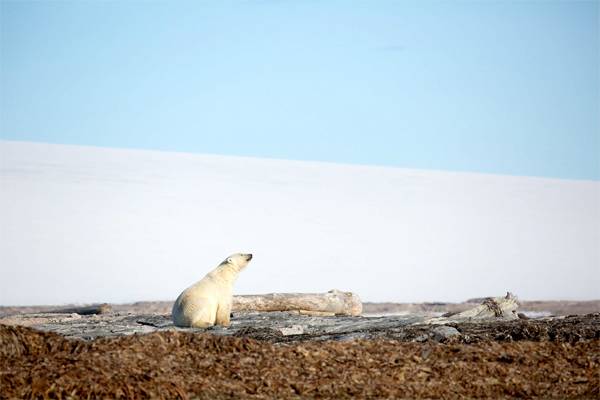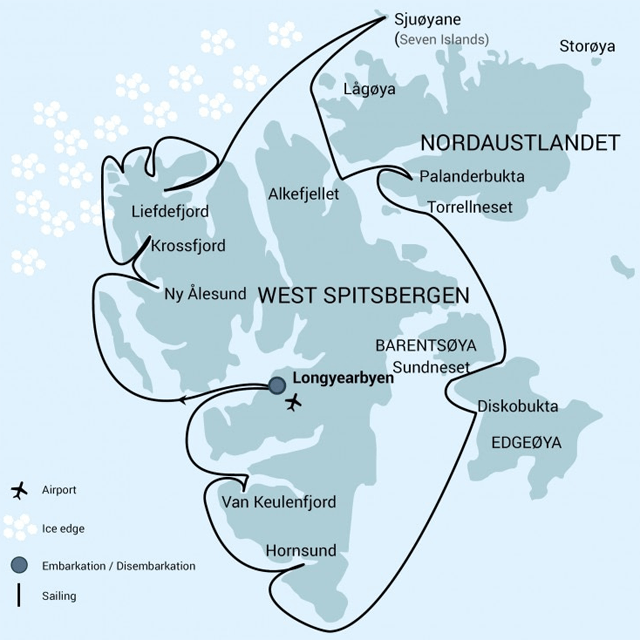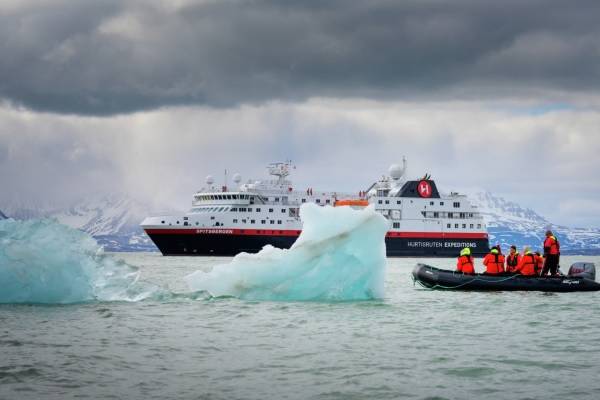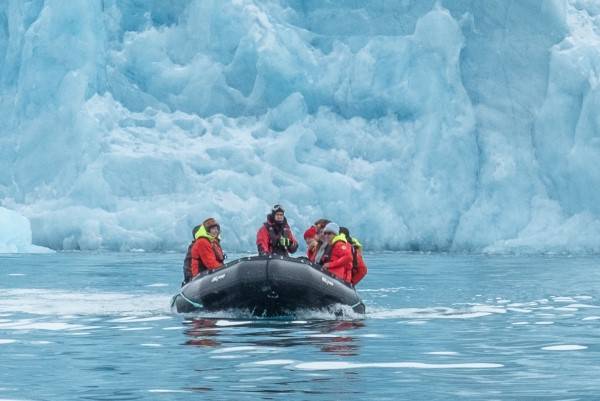HIGHLIGHTS
- Take
a close-up look at bearded and ringed seals, polar bears, blue whales,
reindeer, pink-footed geese and walruses
- Near
Torrelneset you can also visit the polar desert of Nordaustlandet, next
to the world’s third-largest ice cap
- Watch
colorful flowers bloom while flocks of kittiwakes and
Brünnich's guillemots nest on the cliffs
DATES / RATES
Rates are listed per person in USD
|
| Start Date | End Date | From EUR | From USD |
|---|
// Rates are listed per person in USD
|
| Start Date | End Date | From EUR | From USD |
|---|
ITINERARY
Day
1: Largest town, biggest island
You
touch down in Longyearbyen, the administrative center of Spitsbergen,
the largest island of the Svalbard archipelago. Enjoy strolling around
this former mining town, whose parish church and Svalbard Museum make
for fascinating attractions. Though the countryside appears stark, more
than a hundred species of plant have been recorded in it. In the early
evening the ship sails out of Isfjorden, where you might spot the first
minke whale of your voyage.
Day
2: Cruising Krossfjorden
Heading
north along the west coast, you arrive by morning in Krossfjorden. Here
you might board the Zodiacs for a cruise near the towering blue-white
face of the Fourteenth of July Glacier. On the green slopes near the
glacier, colorful flowers bloom while flocks of kittiwakes and
Brünnich’s guillemots nest on the cliffs. You have a
good chance of spotting an Arctic fox scouting for fallen chicks, or a
bearded seal paddling through the fjord.
In
the afternoon you sail to Ny Ålesund, the northernmost
settlement on Earth. Once a mining village served by the
world’s most northerly railway – you can still see
its tracks – Ny Ålesund is now a research center.
Close to the community is a breeding ground for barnacle geese,
pink-footed geese, and Arctic terns. And if you’re interested
in the history of Arctic exploration, visit the anchoring mast used by
polar explorers Amundsen and Nobile in their airships, Norge (1926) and
Italia (1928).
Day
3: The massive Monaco Glacier
Depending
on the weather, you could sail into Liefdefjorden and cruise within
sight of the 5-kilometer-long (3.1 miles) face of the precipitous
Monaco Glacier. The waters in front of this glacier are a favorite
feeding spot for thousands of kittiwakes, and the base of the ice is a
popular polar bear hunting ground. If ice conditions prevent sailing
here early in the season, an alternate route along the west coast of
Spitsbergen can be implemented.
Day
4-5: Stop at the Seven Islands
The
northernmost point of your voyage may be north of Nordaustlandet, in
the Seven Islands. Here you reach 80° north, just 870 km (540
miles) from the geographic North Pole. Polar bears inhabit this region,
so the ship may park for several hours among the pack ice before
wheeling around west again.
When
the edge of this sea ice is tens of miles north of the Seven Islands
(mostly in August), you can spend a second day in this area.
Alternatively (mostly in July) you may turn to Sorgfjord, where you
have the chance to find a herd of walruses not far from the graves of
17th-century whalers. A nature walk here can bring you close to
families of ptarmigans, and the opposite side of the fjord is also a
beautiful area for an excursion.
Day
6: Highlights of Hinlopen
Today
you sail into Hinlopen Strait, home to bearded and ringed seals as well
as polar bears. At the entrance there is even the possibility to spot
blue whales. As with Liefdefjorden, you can take an alternate west
Spitsbergen route if ice prevents entry into Hinlopen. After cruising
among the ice floes of Lomfjordshalvøya in the Zodiacs, you
then view the bird cliffs of Alkefjellet with their thousands of
Brünnich’s guillemots. On the east side of Hinlopen
Strait, you may attempt a landing where reindeer, pink-footed geese,
and walruses are likely sights. Near Torrelneset you can also visit the
polar desert of Nordaustlandet, next to the world’s
third-largest ice cap. Here you may encounter walruses during a
coastline hike over the area’s raised beaches.
Day
7: Barentsøya’s many bounties
The
plan is to make landings in Freemansundet, though polar bears sometimes
make this impossible. Potential stops on Barentsøya include
Sundneset (for an old trapper’s hut), Kapp Waldburg (for its
kittiwake colony), and Rindedalen (for a walk across the tundra). You
might also cruise south to Diskobukta, though Kapp Lee is more likely
your destination. On Kapp Lee is a walrus haul-out, Pomor ruins, and
the chance for hikes along Edgeøya.
Day
8: Land of the Pointed Mountains
You
start the day by cruising the side fjords of the Hornsund area of
southern Spitsbergen, taking in the spire-like peaks: Hornsundtind
rises 1,431 meters (4,695 feet), and Bautaen is a perfect illustration
of why early Dutch explorers named this island Spitsbergen, meaning
“pointed mountains.” There are 14 sizable glaciers
in this area as well as opportunities for spotting seals, beluga
whales, and polar bears.
Day
9: Bell Sund’s flora, fauna, and haunting history
Today
you find yourself in Bell Sund, one of the largest fjord systems in
Svalbard. The ocean currents make this area slightly warmer than other
areas in the archipelago, which shows in the relatively lush
vegetation. Here there are excellent opportunities to enjoy both
history and wildlife. A possibility is Ahlstrandhalvøya, at
the mouth of Van Keulenfjorden, where piles of beluga skeletons can be
found. These remains of 19th-century whale slaughter are a haunting
reminder of the consequences of rampant exploitation. Fortunately,
belugas were not hunted into extinction, and you have a good chance of
coming across a pod. Alternately, while cruising the side fjords of
Bellsund, you can explore tundra where reindeer like to feed as well as
rock slopes where little auks are breeding.
Day
10: There and back again
Every
adventure, no matter how grand, must eventually come to an end. You
disembark in Longyearbyen, taking home memories that will accompany you
wherever your next adventure lies.
 (Click image to view Ship details)
(Click image to view Ship details)
WHAT'S INCLUDED
- Voyage
aboard the indicated vessel as indicated in the itinerary
- All
meals throughout the voyage aboard the ship including snacks, coffee
and tea
- All
shore excursions and activities throughout the voyage by Zodiac
- Program
of lectures by noted naturalists and leadership by experienced
expedition staff
- Free
use of rubber boots and snowshoes
- Transfers
and baggage handling between the airport, hotels and ship only for
those passengers on the group flights to and from Longyearbyen
- All
miscellaneous service taxes and port charges throughout the program
- AECO
fees and governmental taxes
- Comprehensive
pre-departure material












